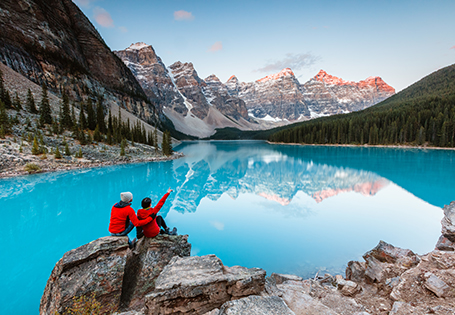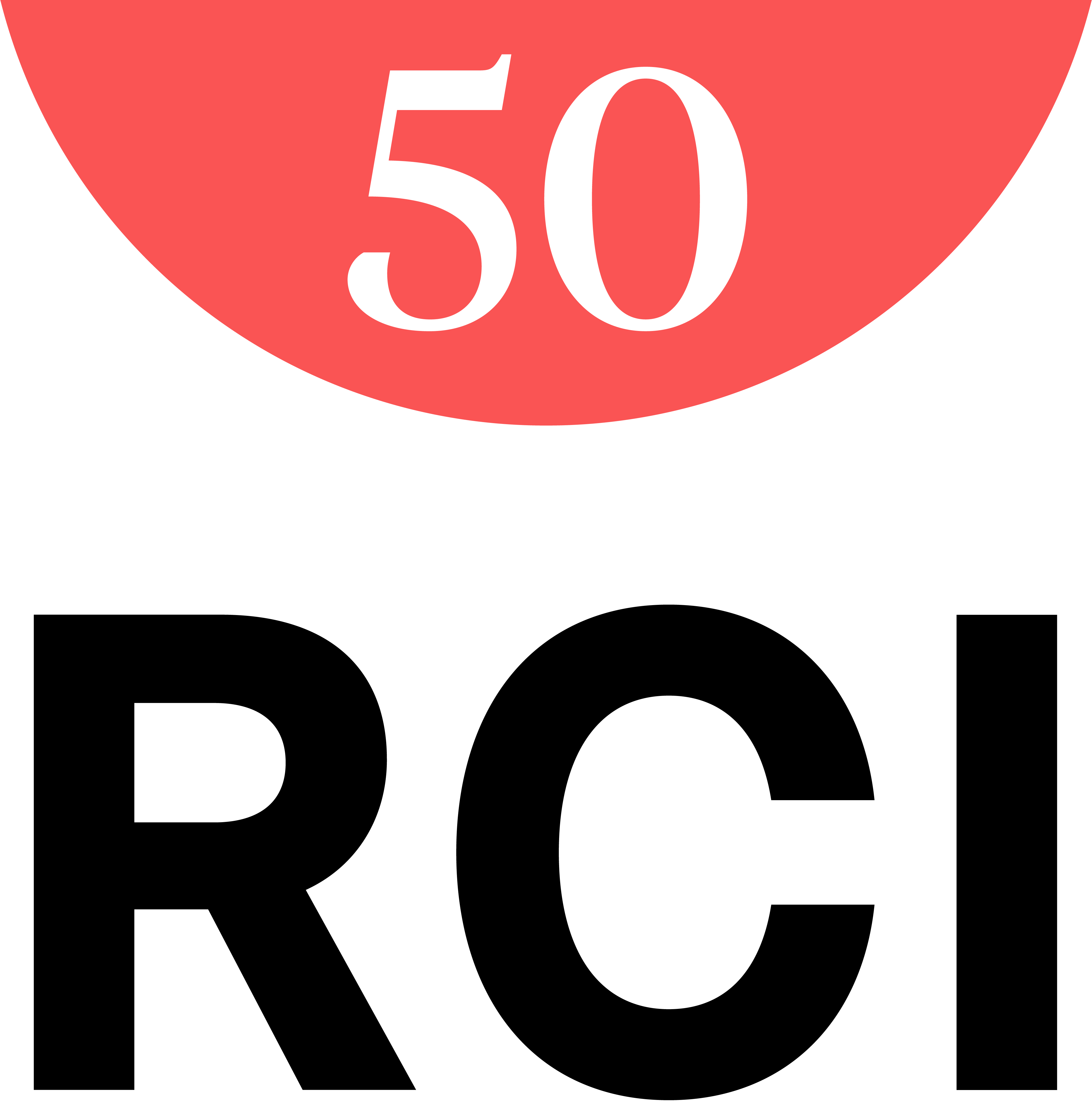Ranked as a top global destination, the popular resort town of Banff in the Canadian Rockies is the stuff dreams are made of, especially for those who thirst for jaw-dropping beauty in its purest natural form. However, long before you plan your trip to the legendary Banff National Park region in the province of Alberta, you’ll want to revisit your dreams to examine them a little more closely. Is your dream laced with snow, showing Banff as a glittering winter wonderland? Or is it filled with blue skies over the dazzling turquoise waters of Lake Louise? What you envision will become the starting point for your journey to Banff, helping you to determine whether you’re more interested in winter, spring, summer, or fall travel.
So when is the best time to visit Banff? Kim Logan, manager of earned media for Banff & Lake Louise Tourism (and a self-professed outdoor enthusiast) offers valuable pointers to nail down the timing question and ensure a perfect vacation that surpasses all your wildest expectations.

Select Your Season
Don’t fret over trying to decide whether Banff is better in winter or summer. The short answer is that Banff is bewitching all year long. Logan puts to rest any concern about getting it wrong. “One is not better than the other — it really depends on personal preference,” she says. Naturally, you’ll be able to do some bucket-list activities regardless of the season, such as visiting the year-round Banff Upper Hot Springs (a UNESCO World Heritage site), or indulging in afternoon tea at the Fairmont Chateau Lake Louise, perfectly perched on the edge of the glittering lake. But largely speaking, since the area is driven by outdoor activities, the offerings drastically change according to the season. The real determining factor will be your personal flavor of fun. Read more on some of the fun activities and attractions Banff has to offer here.
Logan paints a winter storybook picture for us: “Snow-covered landscapes in the winter offer an authentic Canadian winter adventure. In winter, visitors can enjoy classic winter activities like skiing and snowboarding, snowshoeing, ice-skating, dogsledding, and snowmobiling. Winter sees less visitation than summer.”
Logan then moves on into summertime in Banff: “In summer, the days are long and you can enjoy a variety of outdoor activities like hiking, paddling, horseback riding, and via ferrata (a protected climbing route).” She cautions that summer is peak season, and trips should be planned and booked well in advance. Population swell makes parking difficult and Logan strongly recommends public transit, pointing to the official Banff tourism website for full details.
Don’t Let The Rain Get You Down
If you’re looking to spend a lot of time exploring the great outdoors, it’s best to avoid the rainy season in Banff. While some come for the snow and others for the sun-splashed summer conditions, most visitors would prefer to avoid a drizzly holiday. Logan, who has lived in the Banff area for more than a decade, says that the area generally experiences rainfall when temperatures start rising in April, citing June as the rainiest month in Banff.
Of course if it does happen to rain during your stay, there are several good rainy-day activities in Banff that’ll keep you warm and dry indoors. The Banff Park Museum National Historic Site is the oldest natural history museum in Western Canada. Featuring a collection of more than 5,000 wildlife specimens (mostly taxidermied) and a wealth of information about the development of the area, the Banff Park Museum is a great place to spend a drizzly day. The Whyte Museum of the Canadian Rockies is dedicated to preserving the cultural history of the area surrounding Banff, and includes art and artifacts from the area’s indigenous people as well as early settlers and pioneers. The museum grounds are also home to six heritage homes, two of which are open for tours and exploring during the summer months. The Buffalo Nations Luxton Museum is a cultural display dedicated to preserving the daily lives and native art of the area’s indigenous people. Designed to like a western outpost, the building houses a wide array of artifacts, from hunting equipment and tools to tipis and clothing. Any of these three fascinating museums are a great option for staying dry while the clouds cry.
Not Into Crowds?
Plan your visit during Banff’s off-season to avoid the high crowds of the busier months. Banff’s extraordinary scenery and celebration of nature is an open secret—drawing thousands of outdoor enthusiasts from around the world during the busy times. But for some, crowds can really put a damper on enjoying the pristine surroundings.
For those bent on a mountain getaway when fewer people are around, Logan suggests the quieter months of October through November or April through May. These off-peak times guarantee you’ll find the solitude you came for — plus, according to Logan, visitors can often expect to find lower accommodation prices.
Logan shares that some of the most popular activities during Banff’s off-season are visiting the Banff Gondola, the Banff Upper Hot Springs, museums, and national historic sites, which are all open year-round. Other popular attractions include Lake Louise, Johnston Canyon, and Emerald Lake.
How Many Days Do You Need To See Banff?
According to Logan, it’s difficult to give a standard answer to this question because there are so many options for things to do and see in Banff National Park. “The longer you stay, the more you can explore and the more you realize there is to explore,” says Logan.
If you’re visiting in the summer, Logan recommends at least one full day to explore Lake Louise and Moraine Lake (read more on Moraine Lake here). You will have a multitude of hiking trails to choose from, including the one that leads to the storied Lake Agnes Tea House that has been serving tea to hikers since 1905. Logan suggests reserving a day for the Icefields Parkway (Highway 93), a 144-mile scenic drive packed with more than 100 ancient glaciers, amazing rock formations, stunning alpine lakes, and cascading waterfalls. Plan to take it slow and stop to take photos of the stunning scenery, and be on the lookout for the abundance of wildlife.
Exploring the buzzy town of Banff and the surrounding area will be best spread out over a couple of days, says Logan. Start by swinging into the Banff Visitor Center to get a comprehensive picture of everything the area has to offer. Make sure to spend some time walking Banff Avenue, Banff’s picturesque shopping and dining area. Filled with historic architecture, quaint shops, and cute cafes, this popular tourist attraction looks like something straight off a postcard. When you’ve finished in Banff, consider adding a day to visit nearby Yoho National Park for more alpine adventures — including visiting the park’s multiple fossil sites.
Winter in Banff invites you to play in the snow. Logan urges skiers to spend a full day each at all three ski resorts — Mount Norquay, Lake Louise Ski Resort, and Banff Sunshine Village — all of which can be enjoyed using the Banff National Park tri-area ski pass. Lake Louise is the largest of the three, and it’s a multiyear winner of Canada’s best ski resort, meaning it’s a popular (aka busy) resort that is home to 10 chair lifts servicing nearly 150 trails. Mount Norquay is known for being a great spot for inexperienced skiers, as more than half of the resort’s trails cater to beginner and intermediate skiers. It’s also extremely family-friendly — they offer child and adult ski lessons, plus daycare for those that need it. Sunshine Village is known for having the highest elevation of the three, meaning it has more snow, a better snowpack, and a longer ski season. Across all of the three resorts, the array of trail options will make everyone happy, from the beginner to the advanced.
Not a skier? There’s so much more than skiing in Banff in wintertime, says Logan. Plan to allow a few days to enjoy the exhilarating winter activities around Banff and Lake Louise, such as ice-skating, ice walks through frozen canyons, dogsledding, and snowmobiling (available outside the park).
You can spend as much or as little time exploring Banff as your preference dictates. It really just depends on how much you want to do while you’re there, and how much time your schedule permits. For some, a few days or a week would suffice, while for others that wouldn’t cover all the fun things they plan on doing.
The Best Time To Visit Banff National Park
Logan reminds us that the national park, where the town of Banff and Lake Louise are located, is a year-round destination with incredible experiences to offer in all four seasons, so the best time of year to visit Banff National Park is completely subjective.
To break it down by the best month to visit Banff National Park, if you are looking for a winter wonderland experience, some fresh snow on the slopes, and ice on the lakes, Logan says to visit December through March. From mid-March through April and May, spring skiing is underway, reports Logan — temperatures are warmer but there's still plenty of snow on the mountains, offering more than 7,700 acres of great skiing across all three of the area’s ski resorts.
June to September is the best time to experience the lake’s famous turquoise waters and enjoy popular summer activities such as hiking, canoeing, kayaking, and mountain biking. It’s also a great time for golf, and Banff is home to one the world’s most scenic golf courses. From late September through early October is the perfect time to see the beautiful fall colors (known as larch season), while the lakes haven’t frozen and hiking is still widely available, Logan says. Banff Pride also takes place during this time, adding yet more color.
Logan promises that no matter which season you visit Banff, the park offers peaceful restorative opportunities to reconnect with yourself and nature, though you’ll find October through November and April through May are the quietest times.
When you’ve finished exploring Banff, read up on some more cool areas to explore in the Canadian Rockies, and check out this article to learn about another pristine Canadian lake — Ontario’s Georgian Bay.
With RCI, say hello to a travel network where the little things pay off big. Get up to 60% off more than 600,000 hotels and resorts around the world — and enjoy deeper hotel discounts by applying Deposit Trading Power or Points to your hotel stay.
